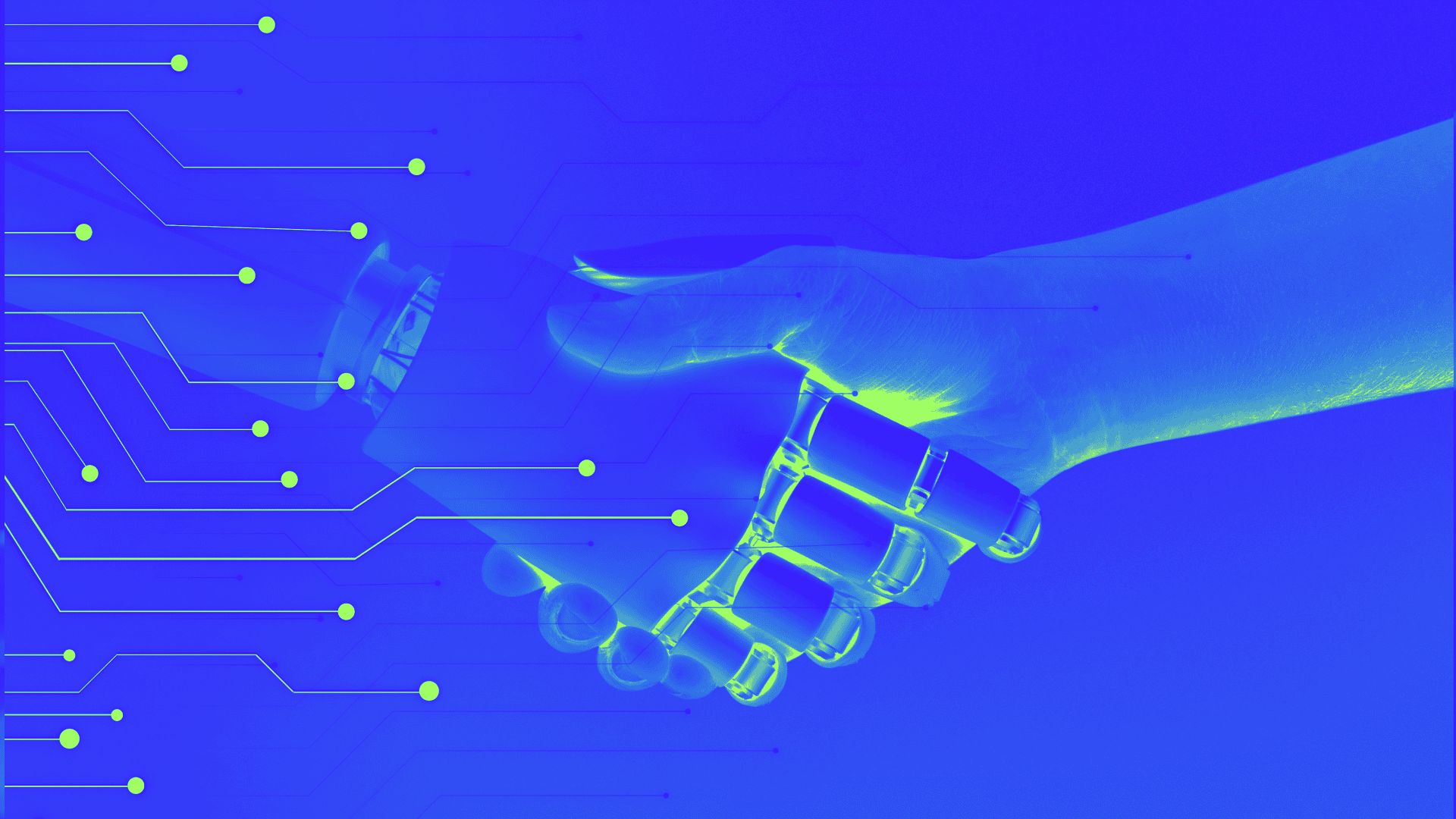If your AI augmentations are falling flat, you’re probably not thinking big enough. You won't get to real value by plugging AI into outdated workflows – you need to reimagine how the work could get done if you didn’t have the constraints you have today.
Salesforce’s Alex Parker works with enterprise clients to help them rethink roles from first principles, through Data + AI “art of the possible” workshops that lead to higher-value AI pilots and more ROI.
The art of the possible
Alex says there are two common barriers to successful AI pilots:
- A lack of understanding about what AI can and cannot do
- A lack of alignment between leadership and other business units
An “art of the possible” workshop tackles both of these barriers by educating people on what is actually possible with AI, then imagining new AI-first ways of working with those capabilities. It begins with the end in mind and works backwards to help define what AI transformation can really look like.
“AI transformation isn’t an easy button and magic robots. It’s all of these little efficiencies that add up, but you’ve got to give people a space to think creatively about it.”
The goal is to establish a core priority for the organization, map how that priority is addressed by teams today, and then imagine a new path to achieving it that doesn’t include today’s roadblocks
The deliverable is then a prioritized, measurable roadmap everyone feels passionate about.
“The workshop is about showing stakeholders the AI promised land,” Alex says. “You’re giving them a baseline of education, aligning on leadership’s priorities and on what’s possible. This gives them a chance to be part of the vision so it’s not a purely top down strategy.”
How to run an “art of the possible” workshop
Plan for a full-day, high-engagement session with every member of the team.
Step 1: Establish your AI north star
Bring leadership and a cross-functional audience together and define a bold but specific goal. What is the ultimate outcome of augmenting with AI? This could be something like “double revenue from this service line in two years” or “cut client onboarding time in half.”
“This is how you’ll make very AI-specific decisions, so it’s important,” Alex says.
This north star anchors the day, so instead of vague aspirations like “be more efficient”, everyone in the room understands the transformation they’re aiming for and how their work connects to it.
Step 2: Establish the possible
Before you get creative, it’s essential to lay out AI’s current abilities and limitations. This helps keep the team from straying into “magical thinking” territory as Machine & Partners’ Ed Ortega puts it.
“The constraints give people permission to think creatively later,” Alex says. “They don’t know the full story and they’re afraid, so that little bit of education is key.”
Alex recommends a short, tailored primer that covers:
- What generative AI is (and isn’t): Some ideas will ultimately fall into the realm of predictive AI instead of generative AI, so make sure to level-set the capabilities of both – and set realistic definitions of common terms like agents, hallucinations, etc.
- Privacy and flexibility: Most AI tools now offer ways to integrate with enterprise data without training or leaking it externally. These integrations will be key to your workflow redesigns so get them comfortable with the data privacy of it all. And because different models are good at different things, focus on tool-agnostic basics and avoid overindexing on the specifics of one model or tool.
- Data readiness: Alex says AI tooling can be flexible enough to use only the data it needs for a specific use case. There are important principles in data readiness, but don’t get stuck insisting on perfection – get clear on how good your data actually needs to be to realize value for your specific goals.
Step 3: Establish the role you want to augment
With your vision and primer established, create detailed personas of the roles that directly impact your north star.
Start with the manual baseline: “How does this role work today?” This should cover:
- Their day to day tasks. Where do they spend most of their time?
- Their pain points. What are their common and currently unsolved friction points?
- Current waste. Where is time, effort, or resources being lost with the way things are currently done?
- The opportunity costs. What higher-value work or strategic projects do they not have bandwidth for?
Don’t just list it out – narrate it. For example: Steve spends the first two hours of his day responding to client emails, another two hours setting up a drip campaign, another two hours summarizing client engagements in the CRM, and the last two hours scheduling follow up calls.
Step 4: Rewrite the “role persona” to incorporate AI
Once you have a narrative of the role, brainstorm which tasks could be offloaded to AI and what your teammate would do with the remaining time. . What if Steve didn’t have to manually enter details into a CRM after every call? What if he didn’t have to manually nurture his list of contacts?
Focus on the north star you established and create a second, AI-first persona: Steve spends the first 15 minutes of his day reading the AI drafted executive summaries of his last 5 client calls and then approving an AI generated follow up with a meeting scheduler attached.
This second persona should solve the waste and capitalize on the opportunity costs in the first persona.
“You’re never going to get teams on board with working them out of a job,” Alex says. “You want to make their lives easier. That has to be the point.”
Step 5: Establish grievances
This step is key for what comes after: Prioritization of AI use cases.
This is your team’s space to capture frustrations, like outdated systems, poor data quality, shadow IT concerns, security issues, or underused tools. Basically, anything that may prohibit you from taking the next step on any AI use case.
“Often this becomes part of the roadmap – if you’ll need to buy a new tool, if a use case should come with stronger governance, or if there’s a data roadblock to achieving it.”
Step 6: Establish the roadmap
Finally, make a list of AI augmentations to support the new AI-first role
Rank each idea by impact, effort, and cost, using your list of hurdles above. To build momentum, you want to start with some quick wins. This might mean that you start with lower-impact use cases because they’re low-effort and low-cost.
“Yes, a lot of this work can be incremental," says Alex. “But if it ladders up to the north star, you can still tell the broader ROI story and that incremental work starts to convince people.”
For the higher impact use cases, consider:
- What your current tools might already do for you. What underutilized features can you leverage that can lower your effort and costs?
- The “big rocks” that need to be addressed for the use case to succeed. This might be data clean up or a major system upgrade, aka the higher effort and cost scenarios.
At the end of this session you will have provided your team a baseline education of today’s AI capabilities, aligned your team to a shared vision, built momentum, and established a ranked roadmap that maps back to ROI and your north star.










